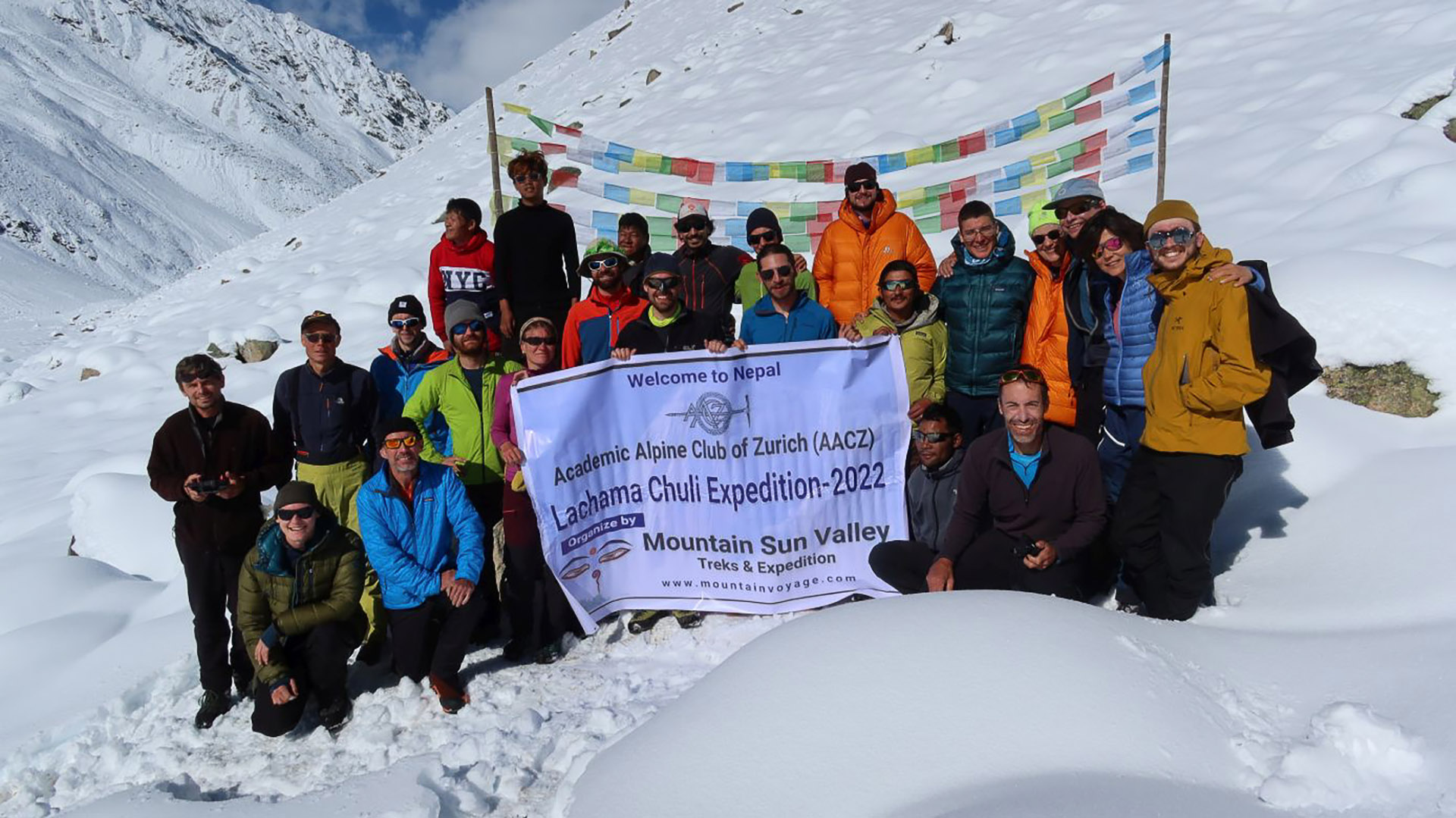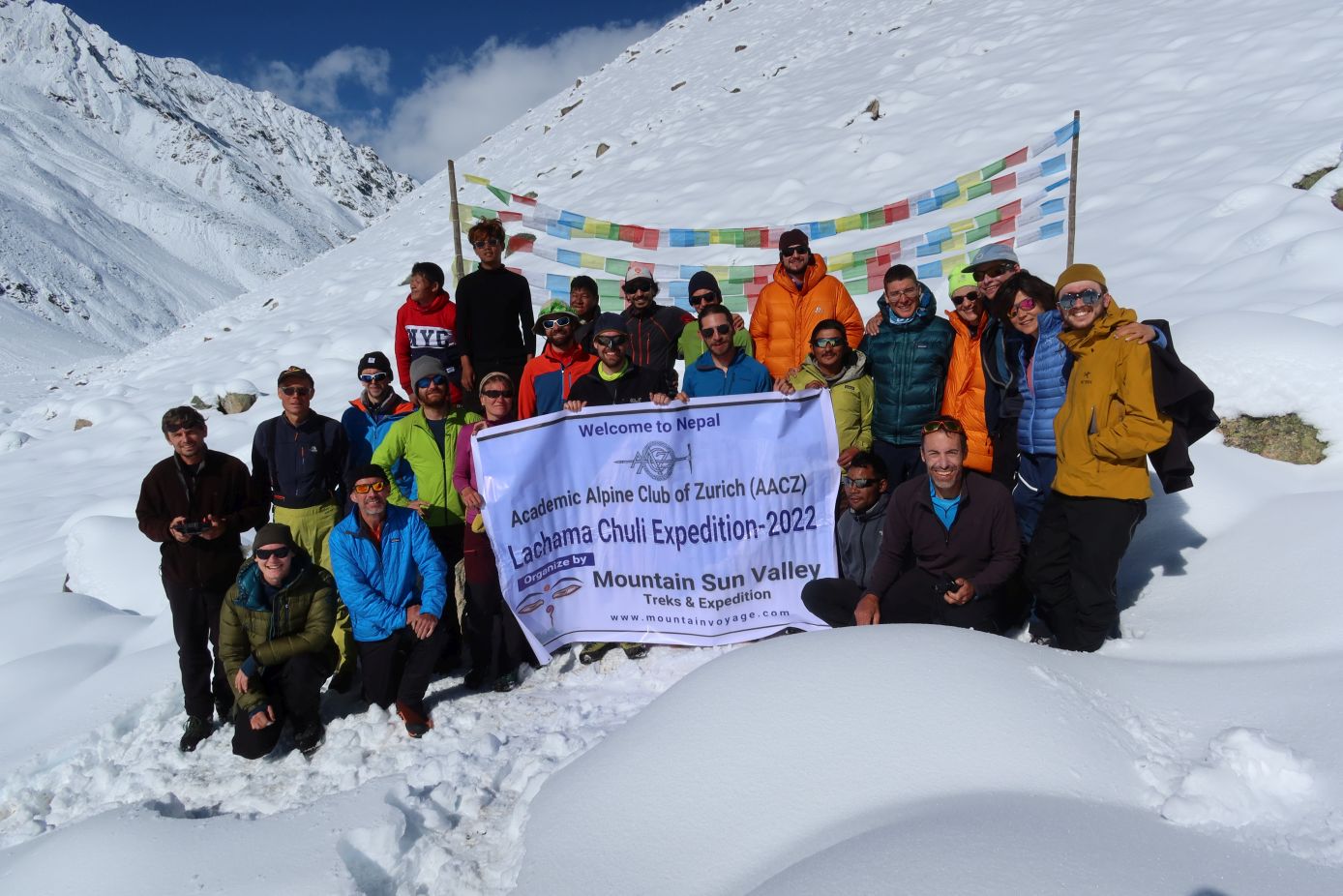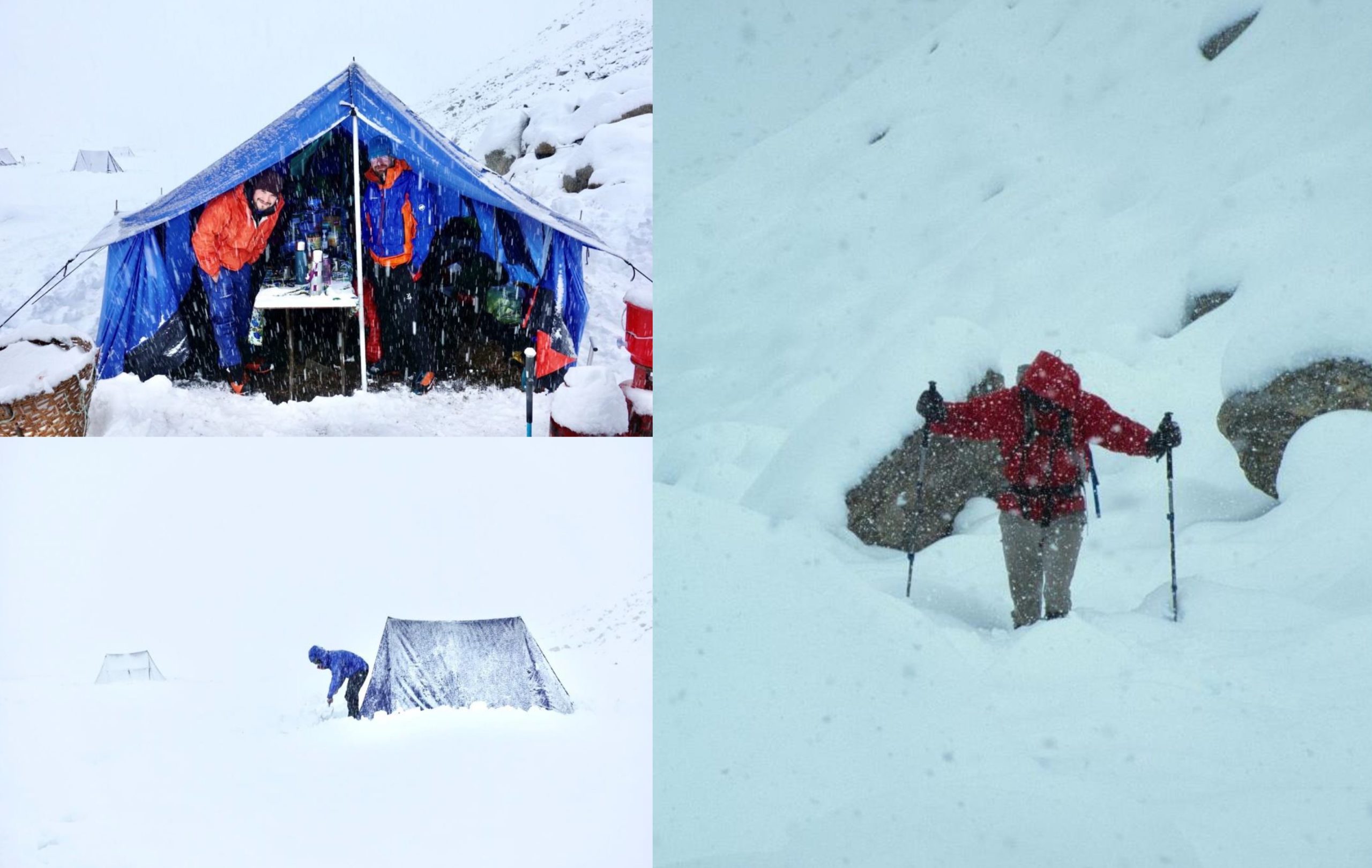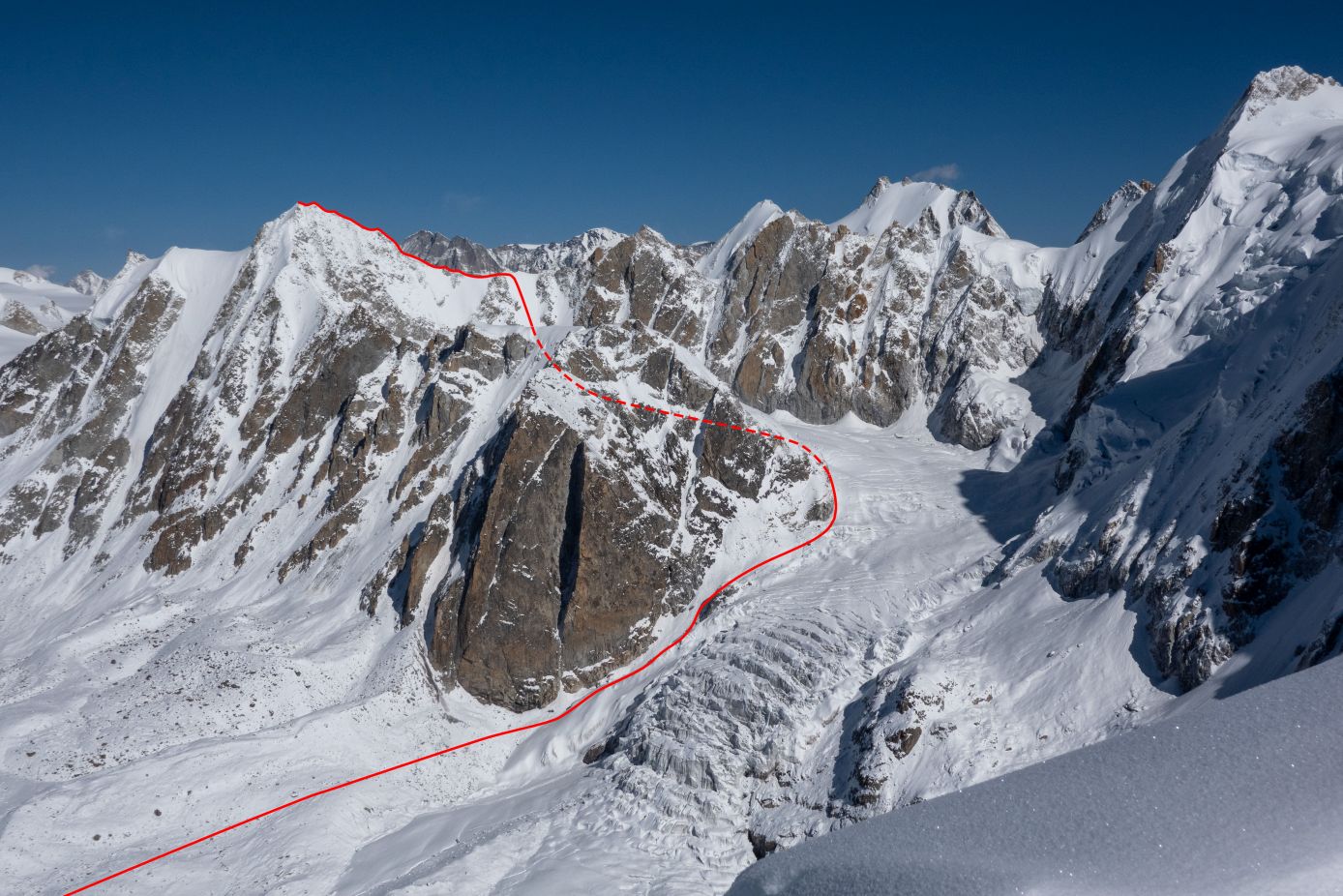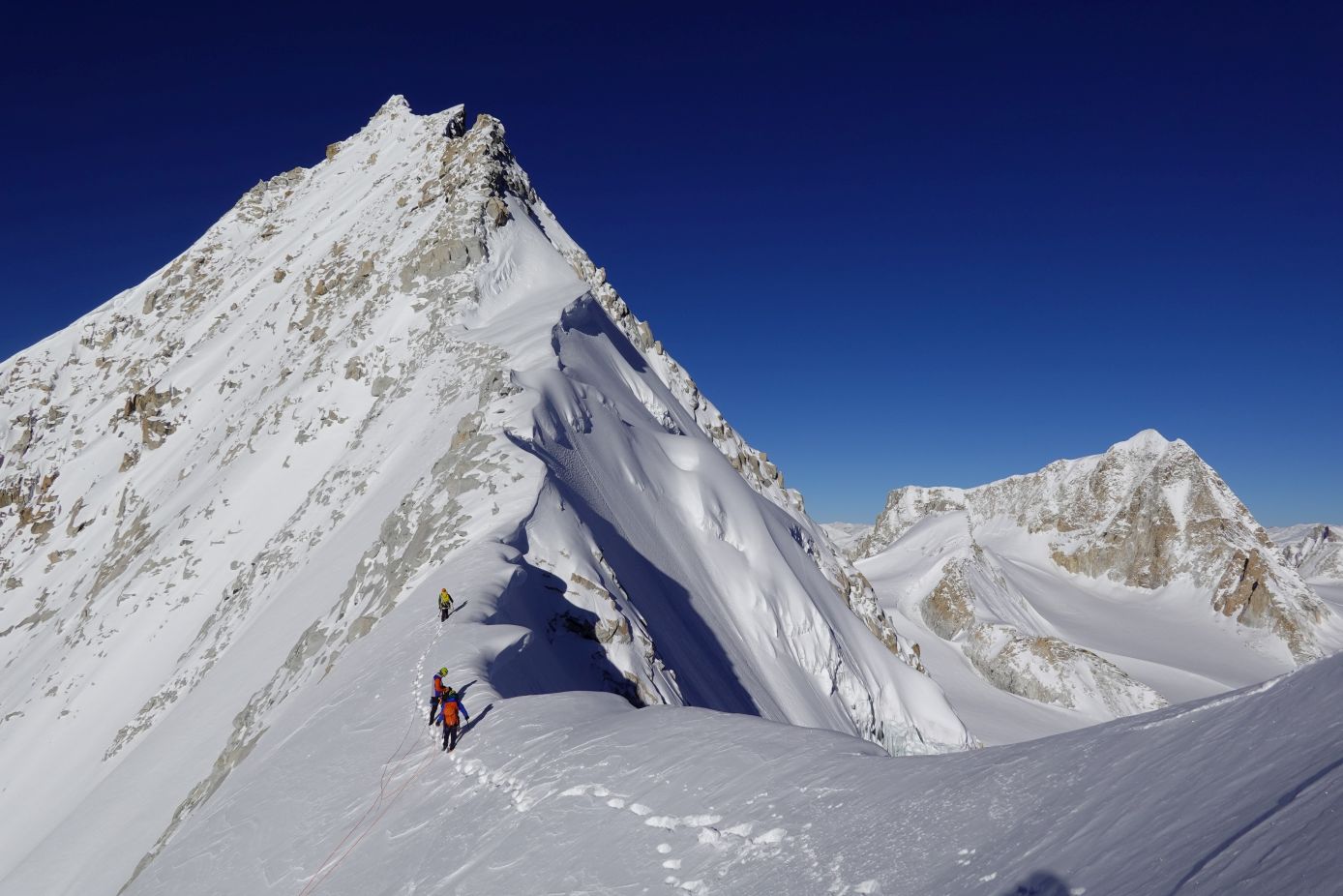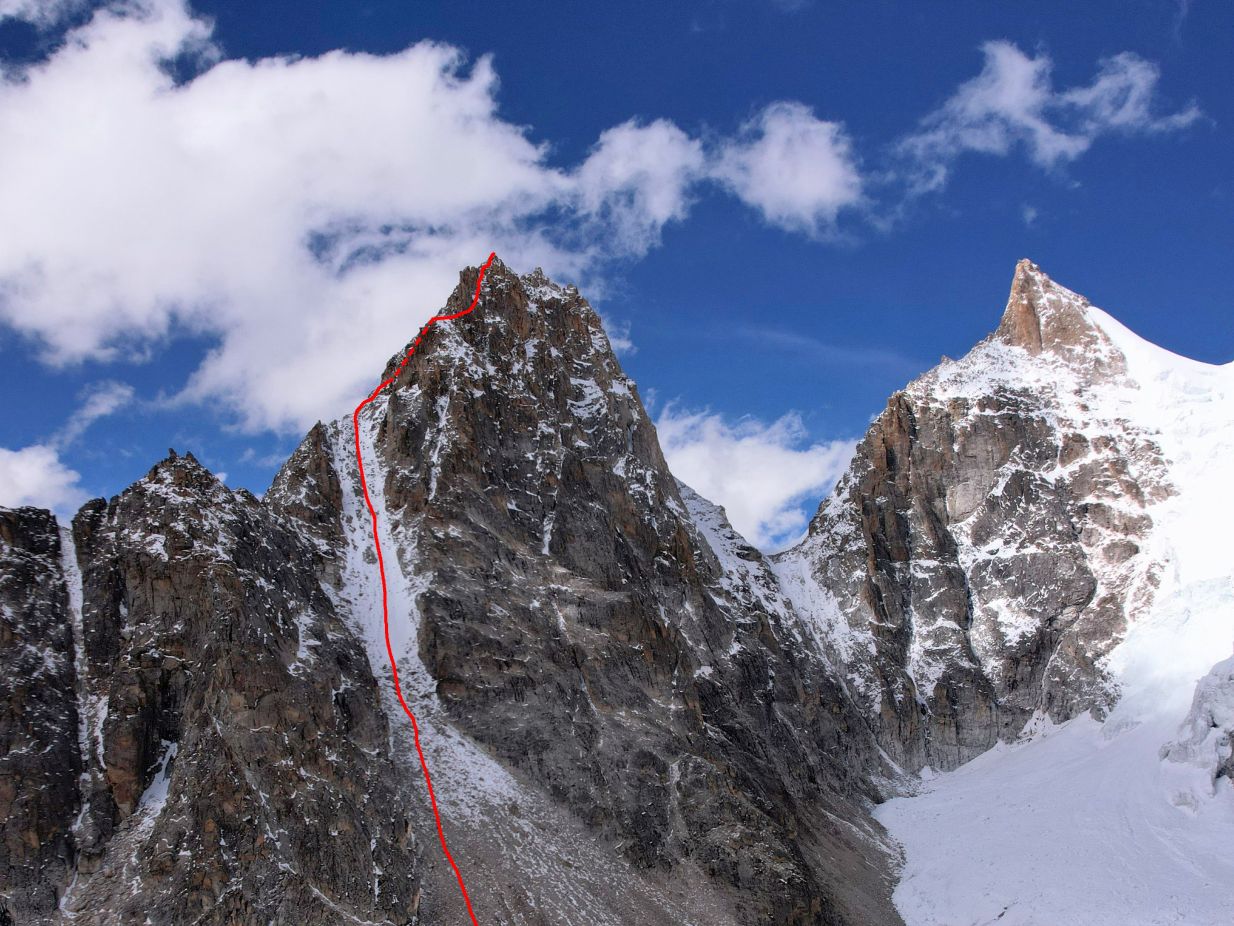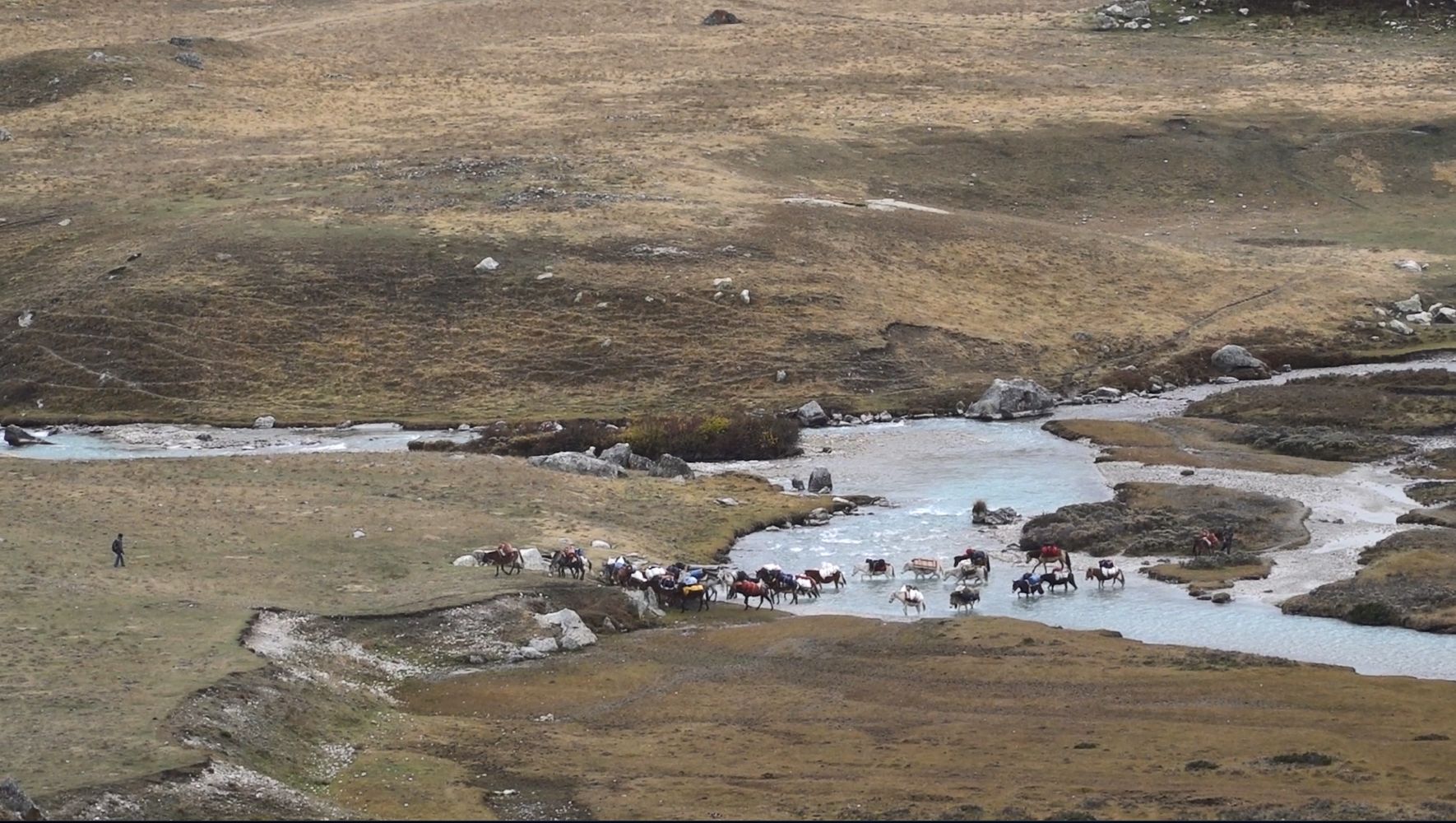Changla Himal Expedition 2022 by Bruce Normand
The Zurich Academic Alpine Club
Texts and photos by Bruce Normand
The Academic Alpine Club of Zurich sounds like a dusty old institution, and it is indeed old – we celebrated the 125th anniversary in 2021. However, the nature of academics is to explore stuff, and in that time tough old club members have explored the Swiss Alps when these were wild, the Peruvian Andes, the Hindu Kush, China in its dark ages and Greenland twice. Oh, and they nearly climbed Dhaulagiri in 1953. In 2022 the AACZ looks like global academia, meaning it is totally international, and we still like to explore stuff. For the anniversary expedition 19 of us, from 11 different countries, decided to visit the remote Changla Himal, located on the northeastern edge of Humla district, in the far northwest corner of Nepal. The highest peak in the range, Lachama Chuli (6721m), was climbed in 2007 from Tibet (where it is known as Kubi Kangri), its neighbour Gave Ding (6521m) was climbed in 2015, and otherwise around 20 6000m peaks and countless granite rock faces remain more or less undocumented.

19 members and 5 staff – in BC after the big storm
The logistics for such a remote region are fairly complex, not least because there is no road to the upper Humla so you have to fly on a small plane, with your 2 tons of excess baggage. Our agent, Rajendra Dalal of Mountain Sun Valley Treks and Expeditions, steered us expertly through the climbing and trekking permits, the domestic road and air travel and the process of finding a 44-mule train for the 4-day trek from Simikot to our base camp (BC) at 4400m in the Lachama Khola. A key part of this support was providing our Nepalese staff, super-cook Lhotsu and his 4 indefatigable helpers, who would keep us well fed, warm and generally in good spirits right through the testing times to come…

mules: Our mule train on the trek to BC
The test was that we ran into a major cyclone, which caused flooding and landslides over much of the Indian subcontinent and for us meant 1m of snow at and above 4000m that did not melt off for the rest of the season. All our plans for small teams exploring everything from walk-ups to big lines on 6500m summits shrank rapidly to mind-numbing trail-breaking, where sometimes all of us in turn could barely gain 2km per day. Most of the team fought its way up the N Fork of the Lachama Khola, turning north at a lake beneath Gave Ding and aiming for P6122, the best and most aesthetic target in these conditions. After 18km of trenching teamwork to reach the upper glacier, on 16th Oct the summit was reached by Javier Alegria, Max Brunner, Daniel Crepaz, Andreas Frank, Felix Hermann, Hansueli Jud, Yannick Revaz, Gediminas Simutis, Charlotte Steinmeier and Yannick Walo, who enjoyed truly expansive vistas of the western Himalaya on a cloudless day.
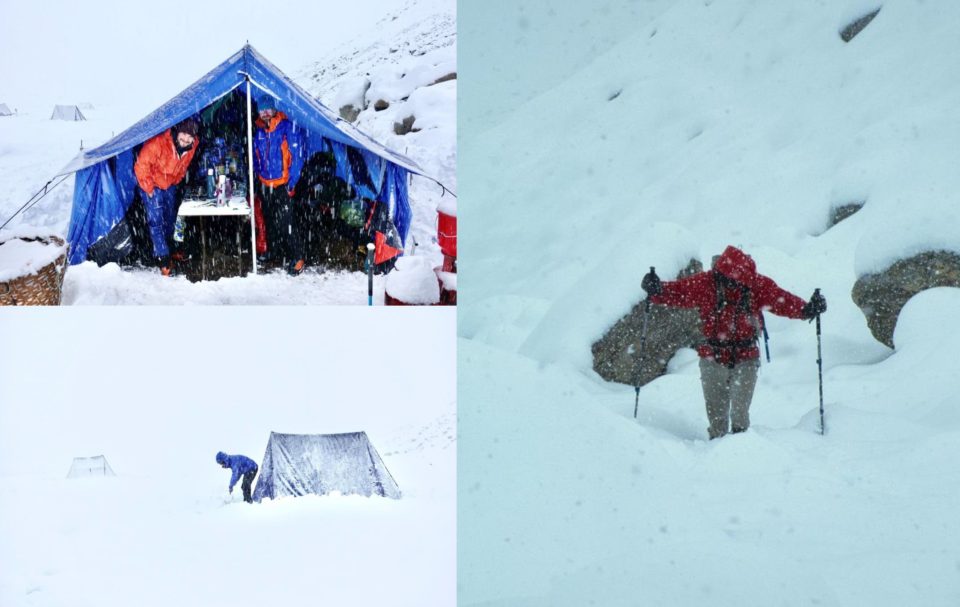
The big storm: waiting, shoveling and testing boots
A separate group of four, Manuel Bonnet, Ulla Heikkilä, Ven Popov and Yoann Trellu, decided to explore the S Fork and gained 10km in an equally heroic team trail-breaking effort. They identified the S Ridge of steep and rocky P6076 as a viable objective and on 18th Oct climbed a long access couloir to gain the upper mountain. Here they climbed 2 pitches with rock difficulties up to French 5a among 20+ pitches of mixed scrambling, reaching the central summit (c. 6050m) as clouds and dark closed in. Of the remaining team members, Christian Läubli and Bruce Normand were sick, Steve Brown was weak from illness, Alex Skawran had a small accident and our tireless expedition doctor Sarah Marti was too busy caring for the invalids to think about following the big team to the summit. After their summit, some members of the N Fork group split up for small-team efforts on different peaks, but all were stopped by the deep and dangerous snow. That made us especially grateful when our 20-mule team was able to make it all the way to BC, despite having to cross more than 10km of snowy ground to get there, so that we could get back to Simikot safely and on time.
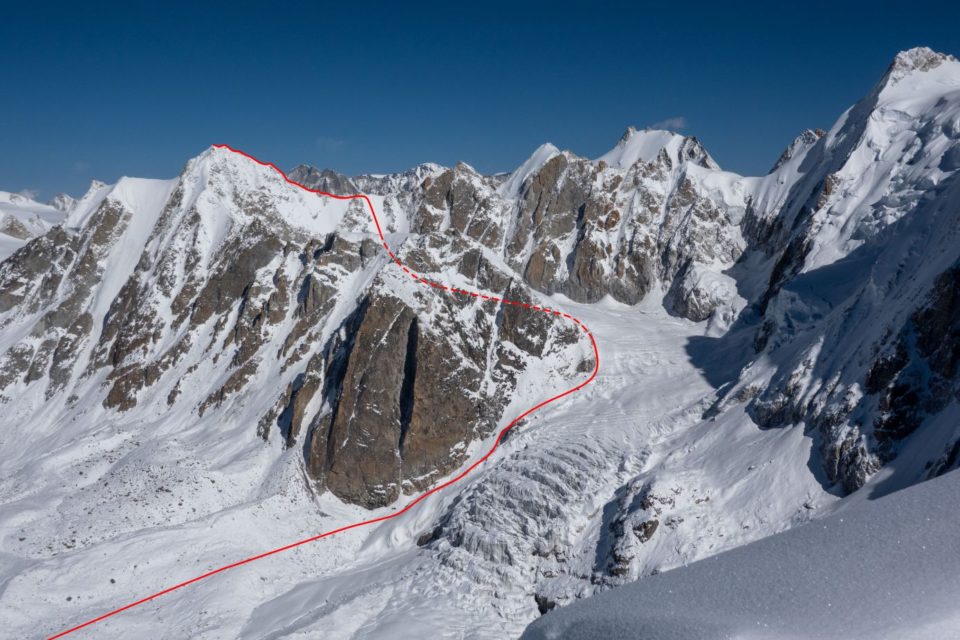
P6122_route: P6122 viewed from the southeast (on P6233). The climbers suggest the name Lukeko Baref (Hidden Glacier Peak in Nepali) for this summit.
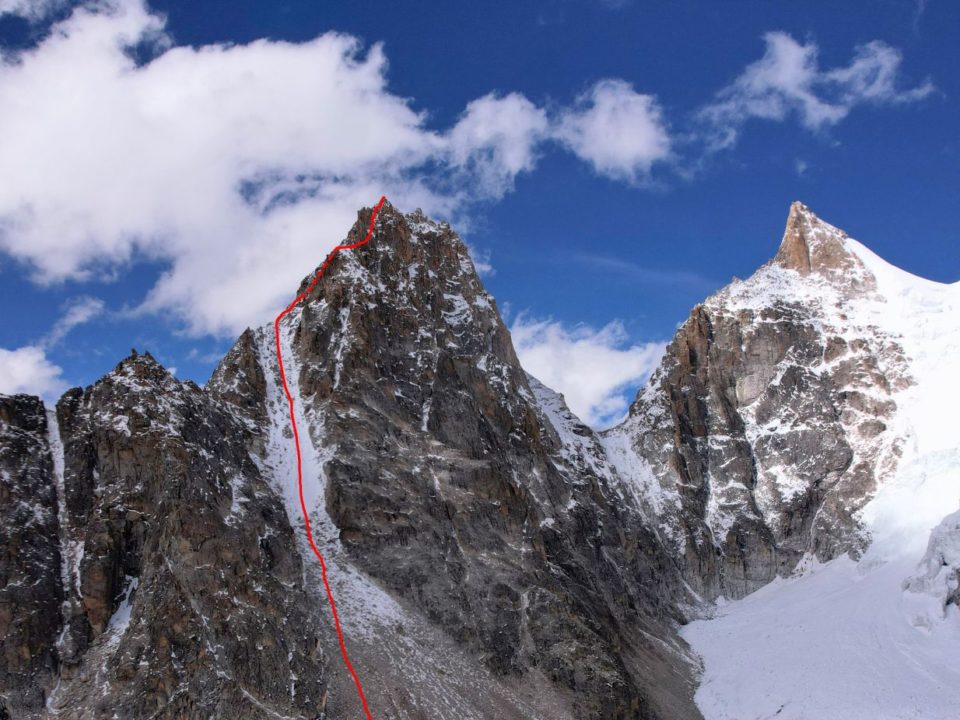
P6076_route: P6076 viewed from the southeast by drone. The climbers suggest the name La Sum (Three-Summit Peak in Tibetan) for this mountain.

P6122_Spanorama: Panorama from the summit of P6122, looking south at P6506, Lachama Chuli (P6233 in foreground) and Gave Ding. P6076 is the rocky spire west of Gave Ding
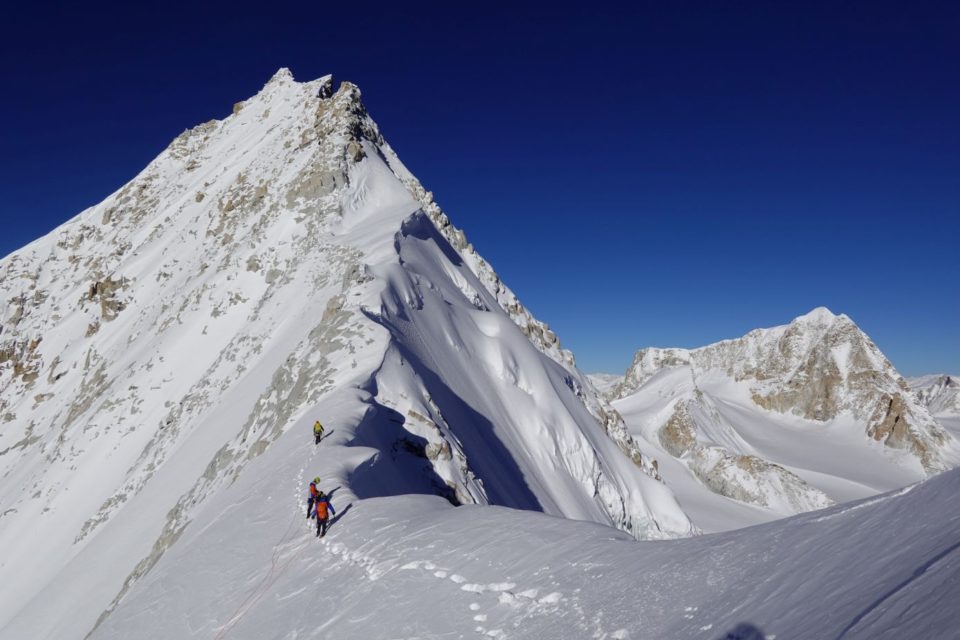
P6122_climbing: Starting up the summit ridge of P6122
Bestard Top Extreme Lite
An important ingredient of our success was the Bestard Top Extreme Lite expedition boot. We are extremely grateful to Bestard for giving us an excellent deal on their top-of-the-line winter boot, which 8 of the 19 members used. Of course that also let us do some back-to-back testing with different models in the tough conditions – frequent knee-deep wet snow and temperatures down to -20C every night. The TELs were consistently rated the most comfortable, nobody got cold feet and the disadvantages of its traditional design – normal laces and no in-built gaiter – did not make a big difference as none of the boots we had stayed dry in these extreme snow conditions…

Ven Popov starting the hard climbing on P6076 (note his TEL boots)
The AACZ
The AACZ is an old club, but we were a (mostly …) young team, well aware of the context of expeditioning in a climate crisis and coming from one of the richest countries in Europe to one of the poorest in Asia. We double-offset our estimated 62-ton CO2 emissions, once with tree-planting in Nepal and once by buying efficient cooking stoves for local Humla women. We also ran 2 aid projects: in 2021, when the expedition itself was cancelled due to Covid uncertainties, we raised 20000CHF for the national medical NGO Ek Ek Paila (ekekpaila.org) to carry out cataract operations in the mountain regions of Nepal. In 2022 we raised 12000CHF for the Humla-based village development NGO RIDS (rids-nepal.org) to carry out housing and water improvements in the village of Durpa (near Simikot). As we left Simikot, we also donated all our medicine to the hospital and all our spare cooking gas and mountain food to the Upper Karnali Landscape Initiative (ukali.org) to carry out further fieldwork monitoring snow leopards.
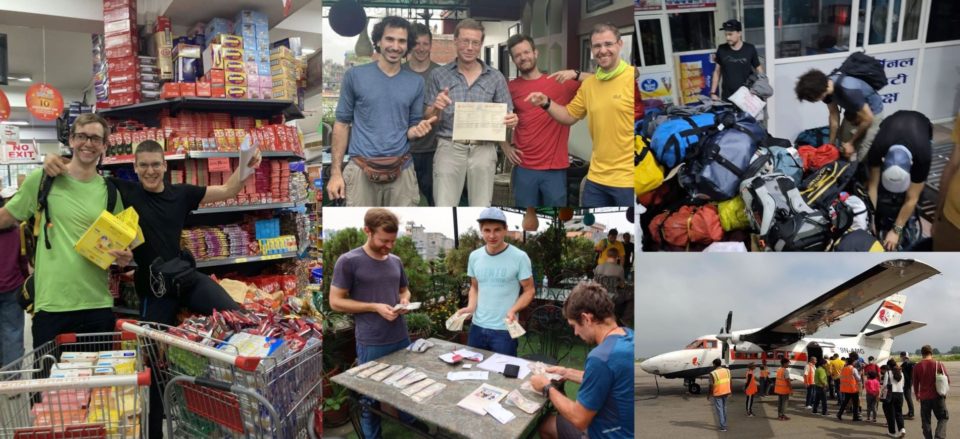
Expedition fundamentals: permits, money, food and gear
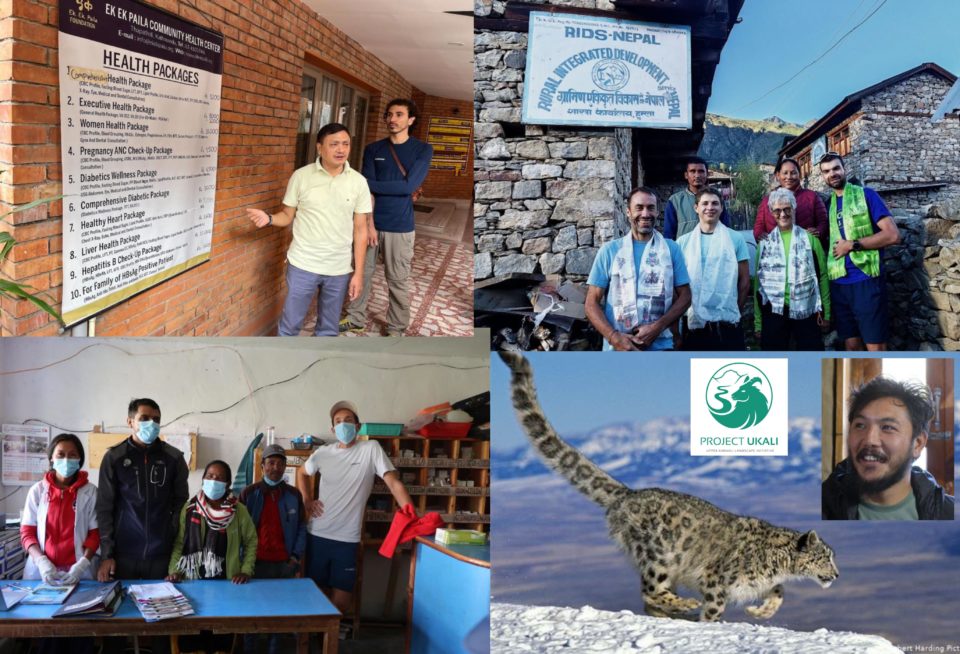
Our aid projects: Ek Ek Paila, RIDS, Simikot hospital and Project UKALI
We would like to thank the AACZ for their generous financial support of our Changla project, Bestard (again) and Mammut for in-kind support and the Neurologische Praxis Zollikerberg for all our medical support.
Bruce Normand
